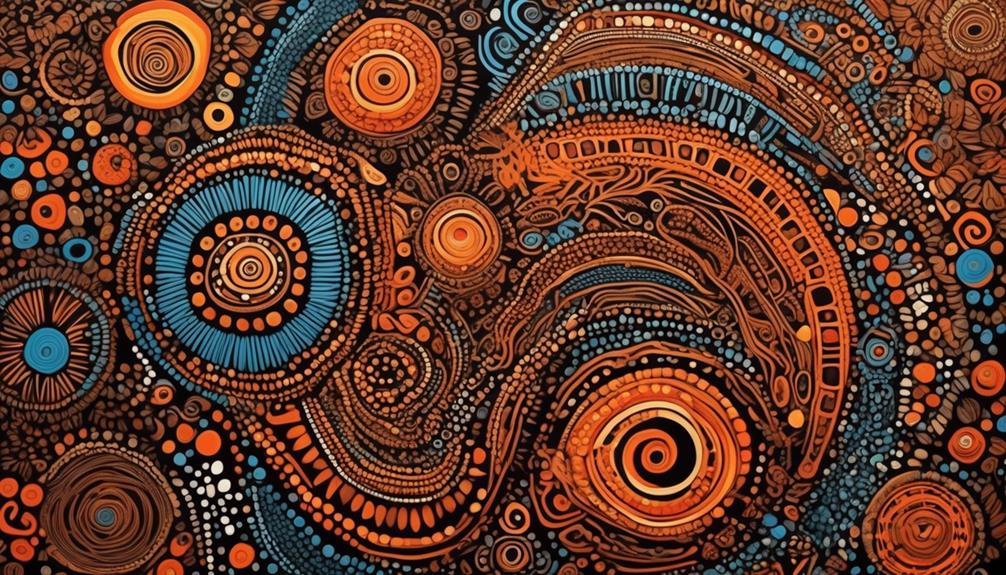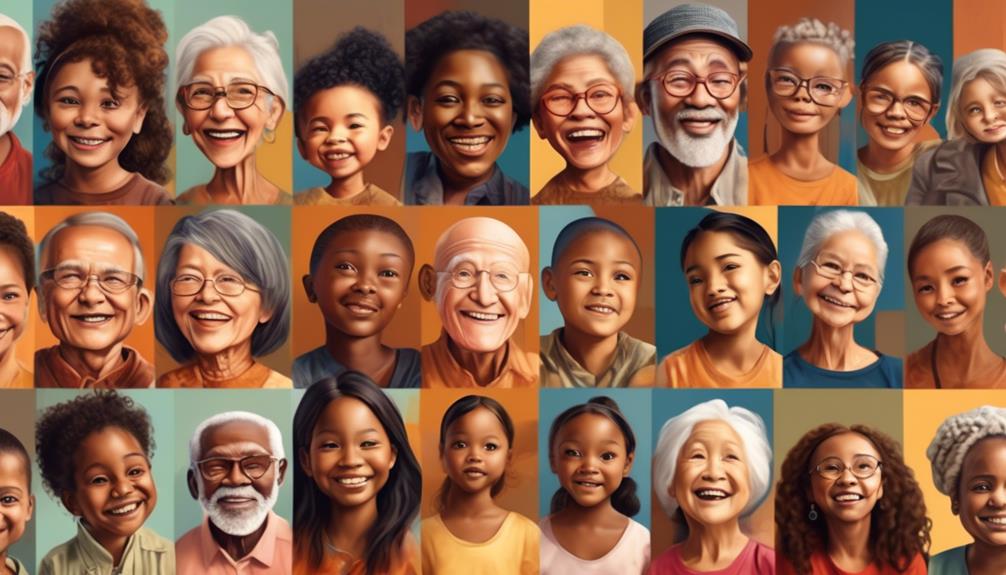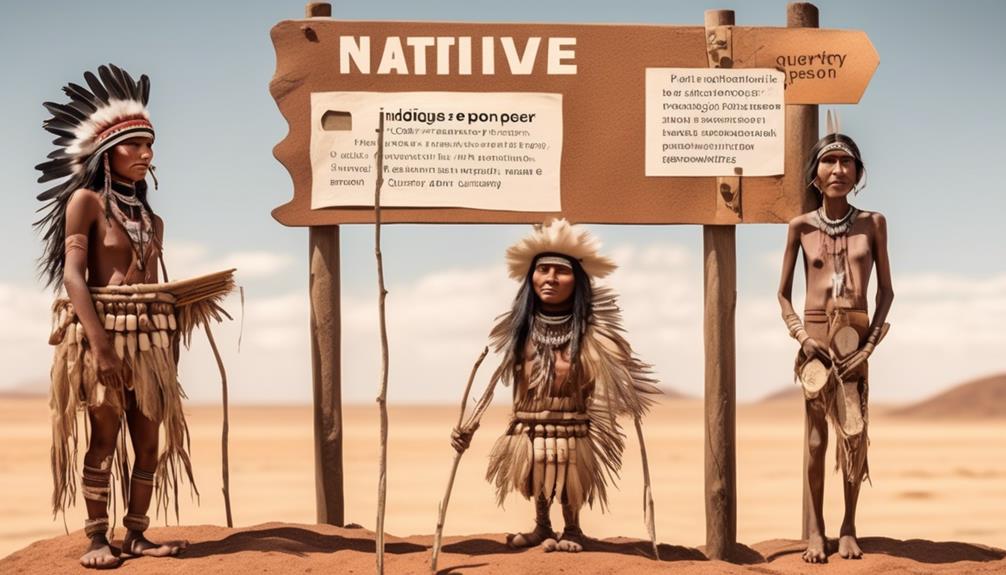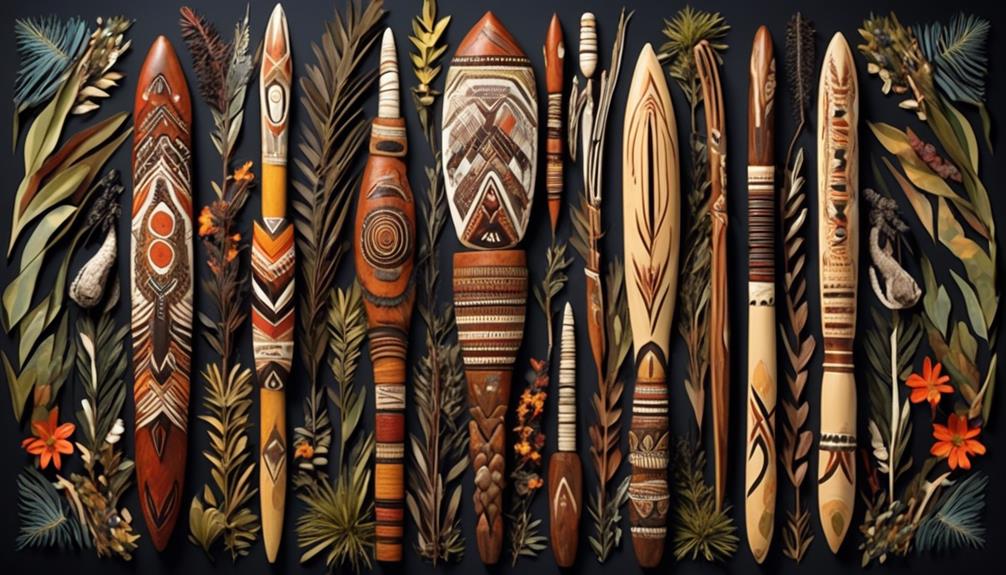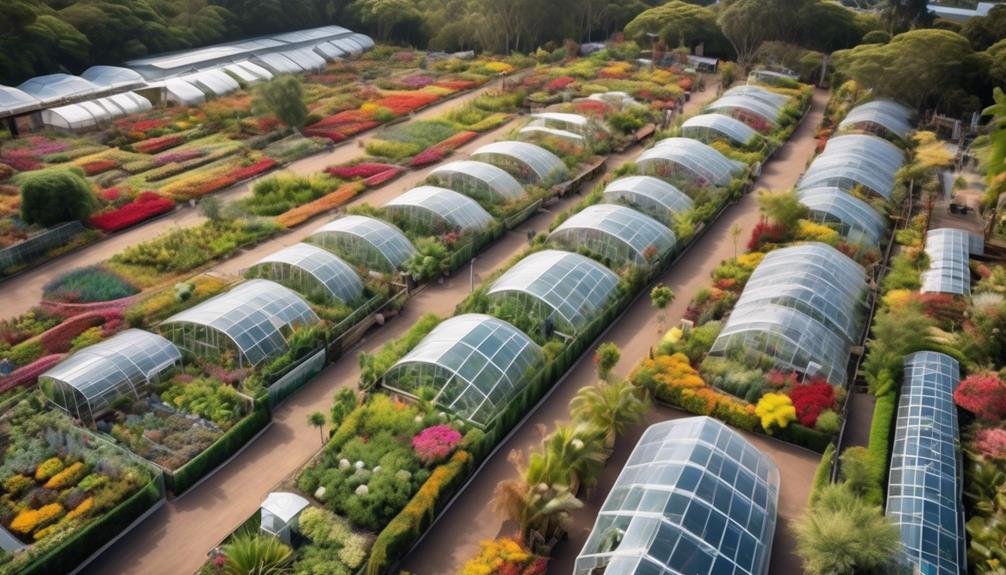The distinct designs of Aboriginal art, characterized by their deep cultural roots and varied visual lexicon, have enchanted both art lovers and anthropologists. These designs, with their elaborate motifs and meaningful symbolism, provide a glimpse into the customs and ideologies of the Aboriginal communities.
However, there is more to these designs than meets the eye. From the ancient rock art found in remote regions of Australia to the contemporary interpretations gaining global recognition, Aboriginal art continues to evolve and resonate with audiences worldwide.
Key Takeaways
- Aboriginal art has a rich history spanning thousands of years and reflects the cultural and spiritual beliefs of Indigenous peoples of Australia.
- The art incorporates intricate symbols and patterns that carry cultural significance and reflect traditional storytelling.
- Indigenous artists employ a diverse range of techniques rooted in cultural traditions, such as dot painting and cross-hatching, using natural materials like bark, sand, feathers, and animal hides.
- Aboriginal art blends traditional Indigenous art forms with contemporary styles, explores global themes, and showcases adaptability and resilience in the modern world.
History of Aboriginal Art
Aboriginal art has a rich and ancient history that spans tens of thousands of years, reflecting the cultural and spiritual beliefs of the Indigenous peoples of Australia. The cultural significance of Aboriginal art lies in its portrayal of Dreamtime stories, which are the foundation of Aboriginal belief systems. These artworks serve as a visual representation of the deep spiritual connection between the Aboriginal people and the land, animals, and ancestral beings. Traditional practices such as rock painting, bark painting, and sand drawing have been passed down through generations, preserving the integrity of Aboriginal art forms.
The artistic techniques employed in Aboriginal art are deeply rooted in tradition and symbolism. Dot painting, cross-hatching, and using natural pigments are some of the distinctive methods used to convey stories and totems. These techniques aren't merely aesthetic choices, but rather serve as a means of maintaining cultural identity and transmitting knowledge. The intricate patterns and designs in Aboriginal art carry profound meanings and are integral to the preservation of Indigenous heritage.
Symbolism in Aboriginal Art
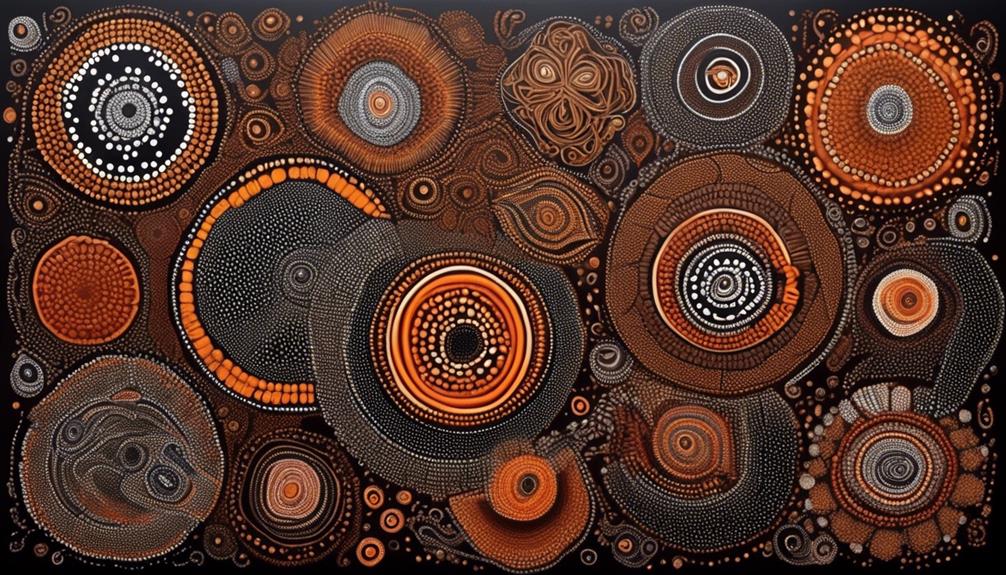
Incorporating intricate symbols and patterns, the art of the Indigenous peoples of Australia conveys profound cultural and spiritual meanings. Aboriginal art is rich in symbolism, with each design carrying cultural significance and reflecting traditional storytelling. The use of symbols in Aboriginal art is deeply rooted in their cultural context, serving as a visual language to communicate important narratives and spiritual beliefs. These symbols often represent elements of the natural world, ancestral beings, and significant events in Aboriginal history, creating a visual record of their cultural heritage.
Traditional storytelling is a fundamental aspect of Aboriginal culture, and their art serves as a medium for preserving and sharing these stories. Through the intricate use of symbols, Aboriginal artists convey complex narratives that are passed down through generations, contributing to the continuity of their cultural identity.
The artistic techniques employed in Aboriginal art, such as dot painting and cross-hatching, aren't only visually captivating but also hold deep cultural and spiritual meanings, reinforcing the interconnectedness of art and culture within Indigenous communities.
Techniques and Materials Used
When creating their art, Indigenous artists employ a diverse range of techniques and materials that are deeply rooted in their cultural traditions and artistic practices. Traditional techniques play a crucial role in Aboriginal art, with dot painting being one of the most widely recognized. This intricate method involves using natural materials such as crushed ochre and charcoal to create patterns of dots, representing elements of the artists' Dreaming stories. Additionally, cross-hatching, a technique involving fine lines intersecting to form various symbols, is commonly used in regions like Arnhem Land.
Natural materials hold significant importance in Aboriginal art, with artists utilizing items like bark, sand, feathers, and animal hides to create their pieces. These materials not only connect the artwork to the land but also carry cultural and spiritual significance. For instance, the use of natural pigments ties the art to the earth, emphasizing the deep connection between the artists and their ancestral lands.
The utilization of traditional techniques and natural materials not only reflects the cultural heritage of Indigenous communities but also serves as a means of preserving and passing down age-old artistic practices.
Contemporary Interpretations and Innovations
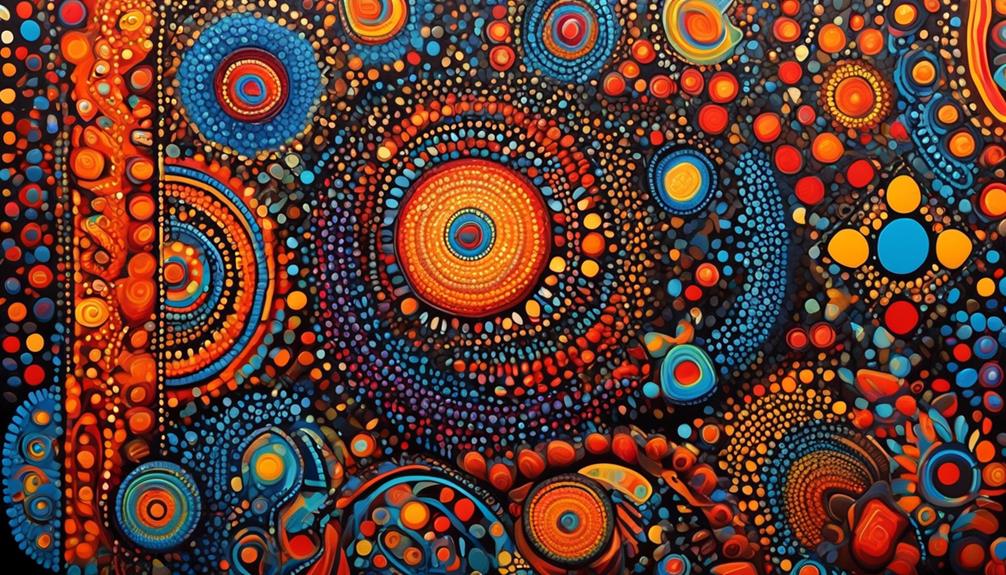
In exploring the evolution of Indigenous artistic expressions, we witness a contemporary reimagining of traditional techniques and materials, showcasing the dynamic adaptability of Aboriginal art in today's global context. Modern influences have significantly impacted the artistic evolution of Aboriginal art, leading to innovative interpretations that reflect the intersection of tradition and modernity. Artists are experimenting with new mediums and technologies, such as digital art and sculpture, while staying rooted in their cultural heritage.
- Fusion of Traditional and Contemporary Styles: Artists are blending traditional Indigenous art forms with contemporary styles, creating visually stunning pieces that speak to both the past and the present.
- Exploration of Global Themes: Aboriginal artists are increasingly addressing global issues through their art, using their unique cultural perspective to offer insightful commentary on topics such as environmental conservation and social justice.
- Revival of Ancient Techniques: While embracing modern influences, there's also a revival of ancient techniques, with artists delving into traditional methods of painting, weaving, and carving, infusing these age-old practices with a contemporary flair.
This contemporary renaissance of Aboriginal art reflects the resilience and creativity of Indigenous communities in adapting to the complexities of the modern world.
Global Impact and Recognition
Aboriginal art has made a profound impact on the global art scene, gaining widespread recognition for its unique cultural significance and artistic innovation. The global recognition of Aboriginal art is a testament to the power of cultural preservation and the enduring appeal of its artistic techniques. Through the intricate dot paintings, storytelling symbols, and connection to the land, Aboriginal art continues to captivate audiences worldwide, serving as a source of inspiration for artists and art enthusiasts alike.
| Global Impact | Cultural Preservation |
|---|---|
| Aboriginal art has influenced contemporary art movements, leading to cross-cultural collaborations and exhibitions that showcase the diversity of Indigenous artistic expressions. | The global recognition of Aboriginal art has contributed to the preservation and celebration of Indigenous cultures, fostering a greater understanding and appreciation for their traditions and artistic heritage. |
The global recognition of Aboriginal art has not only elevated Indigenous artists to international acclaim but also served as a platform for cultural exchange and dialogue. This recognition underscores the importance of honoring and respecting diverse cultural traditions, paving the way for a more inclusive and enriched global art landscape.
Frequently Asked Questions
Are There Specific Rules or Guidelines for Creating Aboriginal Art Designs?
There are specific rules and guidelines for creating Aboriginal art designs. Traditional techniques, cultural symbolism, and contemporary innovations all play a role in shaping these designs.
While there's a deep respect for cultural symbolism, artists also have artistic freedom to experiment and express themselves. It's a balance between honoring tradition and embracing contemporary influences.
Mastery of Aboriginal art involves understanding these nuances and finding one's own voice within this rich artistic tradition.
How Do Aboriginal Artists Incorporate Their Personal Experiences and Stories Into Their Designs?
Incorporating personal experiences and stories into artistic designs is a complex process that requires careful consideration of personal expression and cultural symbolism.
Artists often draw from their own life experiences and cultural heritage to infuse their creations with meaning and depth.
What Role Does Spirituality Play in the Creation of Aboriginal Art Designs?
Spiritual inspiration plays a significant role in many artistic processes. It often serves as a guiding force, influencing the creative decisions and imbuing the artwork with deeper meaning.
The spiritual beliefs and experiences of the artist can profoundly impact the aesthetic choices and thematic elements within the art. By drawing from spirituality, artists can infuse their work with a sense of transcendence and connection to something larger than themselves.
Are There Any Traditional Ceremonies or Rituals Associated With the Creation of Aboriginal Art Designs?
Ceremonial practices hold deep cultural significance in many artistic traditions. They're essential for connecting with ancestral spirits and passing down cultural knowledge.
The artistic process is intertwined with these rituals, serving as a form of creative expression and a means of preserving cultural heritage.
Understanding the connection between ceremonial practices and artistic creation provides insight into the cultural, spiritual, and artistic dimensions of these traditions.
How Do Aboriginal Artists Balance Preserving Traditional Techniques With Embracing Contemporary Innovations in Their Designs?
We believe that traditional techniques and contemporary innovations go hand in hand for Aboriginal artists. It's about cultural preservation and artistic evolution. By balancing both, artists honor their heritage while also expressing their creativity in new ways.
This approach allows for the continuity of traditional methods while also embracing modern influences. It's a delicate dance between the old and the new, resulting in art that's deeply rooted in tradition yet resonates with contemporary audiences.
Conclusion
In conclusion, Aboriginal art designs have a rich history and deep cultural significance.
One interesting statistic is that Aboriginal art has gained global recognition and has become a significant part of the contemporary art world, with an estimated 50-60% of Aboriginal art being exported overseas.
This shows the widespread appreciation and impact of Aboriginal art, highlighting its importance and relevance in the global artistic community.
